From Montecucco, a new wine region in southern Tuscany that was just made DOCG
Montecucco is one of the “new” wine regions in Tuscany, Italy, that has powerful neighbours to fight for consumer mind share with and has several challenges. But that is making great progress and wines to take note of. BKWine’s reporter in Italy, Åsa Johansson, reports.
“They have to change the name if they are going to make it”, says a Swedish friend of mine working in PR when she hears about Montecucco, the wine region in Maremma in southern Tuscany. (Editor’s note: say cucco with a Swedish pronunciation and it means stupid or silly)
“It will become the cuckoo mountain in English, no doubt about it”, she continues.
I am sure none of the producers in Montecucco has thought about that and after having travelled around the region, visited different wine producers and taste a lot of different wine I am convinced that Montecucco can become well known for quality and not the least also affordable wines. And not for a silly translation of the name.
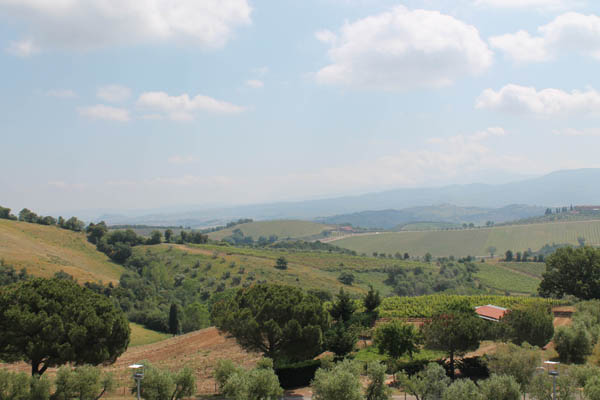
The wines in Montecucco are primarily made from the sangiovese grape just like in many other places in Tuscany. Think for instance about Brunello di Montalcino, Vino Nobile di Montepulciano and Chianti Classico; they are all made from sangiovese but there are still very different one from the other.
Sangiovese is an impressionable grape variety that easily takes on characters from the specific soil or terroir so although most of the wines from Tuscany have this grape as a base there is a never ending flow of different styles, flavours and aromas. Sangiovese is one of Italy’s most widely grown grapes but it is in Tuscany that it is most prominent and gets to most distinguished expression. This is where conditions are right to make really great and excellent wines that have no peer in other parts of the boot shaped country.
Prices for many of the Tuscan wines have increased dramatically in recent years but that is not yet the case for Montecucco that is still fairly unknown compared to the more illustrious neighbours Brunello di Montalcino and Morellino di Scansano. In Montecucco you can still find excellent wines at a very reasonable price. Some of the producers that we meet impress us with their pure and elegant sangiovese wines, sold at very affordable prices. The demonstrate well what can be achieved if you work in the right way.
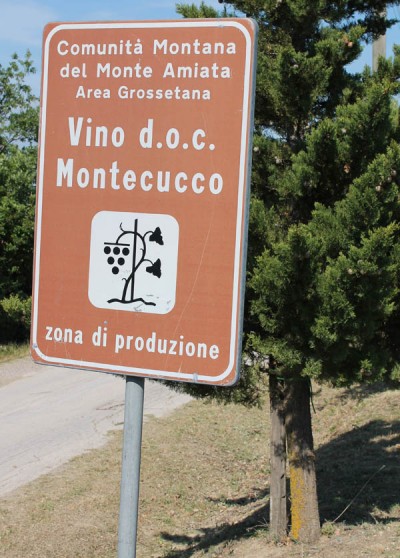
A beautiful countryside, Mozzafiato
My tour of the region takes place in May together with some twenty other wine journalists from different parts of Europe. It is a visual wonder. In spring the Tuscan hills are coloured bright red by the poppies and yellow from genista. “Bellissimo” comes as a natural exclamation every so often. You cannot help being impressed by all the beauty. Springtime and autumn are the best times to visit the region. At that time of the year the climate is not too hot neither too cold. The only difference is that the landscape is dressed in different colours. Montecucco is still untouched compared to the rest of Tuscany where sometimes you can get the feeling that it has lost a bit of its uniqueness due to the many tourists.
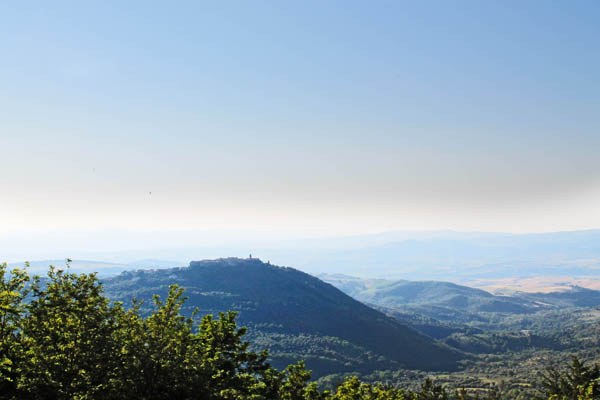
In Montecucco the landscape has rolling hills with big chestnut trees that produces lovely food in the autumn. There are winding dirt tracks and the views from the villages on the slopes of the (no longer active) Monte Amiata volcano is, well, mozzofiato (stunning) as the Italians say.
Wine production in Montecucco
Each of the wine producers in the region has its own different character. Some are very big and have made enormous investments, used famous architects to build multifunctional wine cellar that stand out in the otherwise traditional landscape with ultra-modern vinification installations. There are often meant not only to be used to make wine but also for events, serve food, and just simply enjoy life. While drinking wine of course.
Other producers are at the other end of the scale, small and traditional managing most of the work by hand. Some have only just started to bottle their own wine at the winery. They used to sell in bulk to the cooperative or to bigger producer.
The new DOCG for Montecucco Sangiovese and Montecucco Sangiovese Riserva that was introduced in 2010 have no doubt prodded more producers to start independent production in the hope that the new DOCG label will make it easier to survive on the tough wine market. The first wines with a DOCG label should come onto the market in 2013.
You can find a bit of everything in Montecucco and it is an interesting mix of big and small, modern and traditional, rustic and luxurious.
A selection of wine producers
Castello ColleMassari
ColleMassari is one of the very modern wine cellars built by the famous architect Edoardo Milesi. It is owned by the two sisters Maria Iris and Claudia Tipa who also own the Grattamacco vineyards in Bolgheri as well as Sotto in Montalcino. The name ColleMassari originates from the castle dating back to 1260 that is just a stones throw away from the vineyard. the tasting room is impressive with big bay windows giving a panorama in all four directions. But the winery is not just beautiful but also very functional to make the work smooth and easy. It is built to only use gravitation, completely avoiding pumps to transport the grapes to the fermentation tanks.
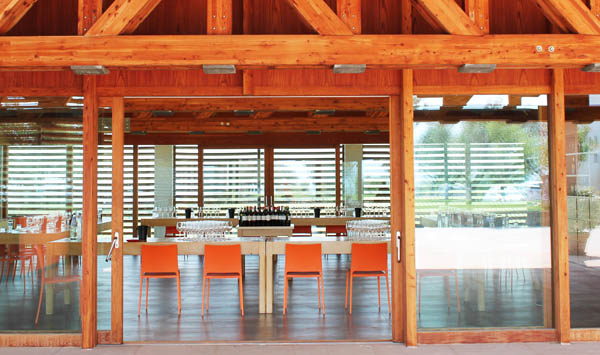
They also work organically on the 80 hectares of vineyards. They also have 40 hectares of olives and their olive oil is typically Tuscan with a lot of flavour and aromas. It is an excellent flavouring oil (as opposed to one used for frying) to be used with salads and directly on pasta or vegetables.
ColleMassari only use natural yeast and their top wine, “l’Omrone”, is made in only 4000 to 5000 bottles. It is fermented in open tonneaux (wooden vats). During the fermentation they do la pigiatura (pigeage, punching down the cap or grape skins) by hand.
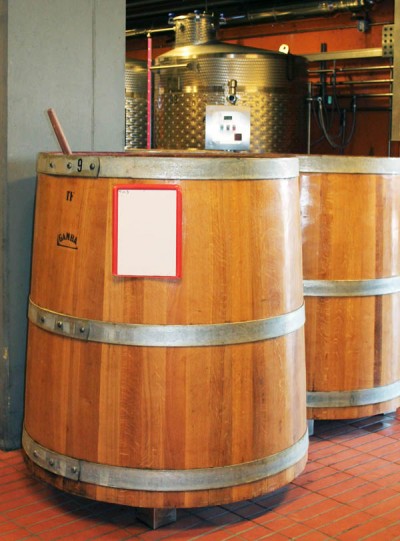
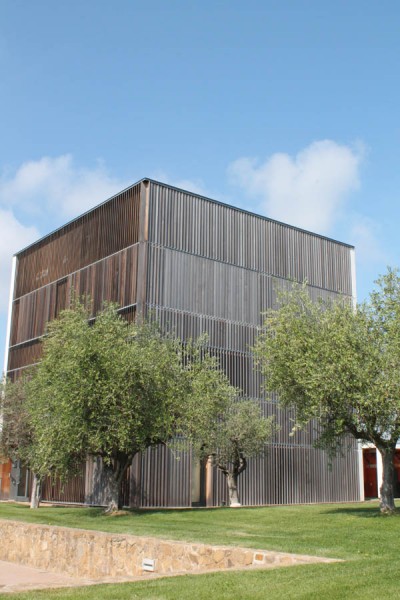
Cantina Pieve Vechia
Cantina Pieve Vecchia is also an ultra-modern installation designed this time by Cini Boeri. His art work can be seen both in the cellar where the wooden barrels are lined up to lead up to a scene where there is a table, chairs, and a book shelf full of wine bottles. The lighting is dim and has a green ting and it feels more like being inside a theatre than in a winery. Even the group of usually very chatty journalist fell quite. Almost.
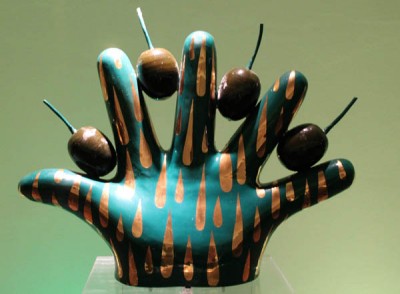
“In spite of this modern installation we are very focused on the contents and not just the shell”, says Vincenzo Monaci, the owner of Cantina Pieve Vecchia. He is a somewhat older gentleman who greets his guest and joins us over lunch in spite of a broken rib. He is very fond of various aspects of culture and also owns Teatro Eliso, a well known theatre in central Rome.
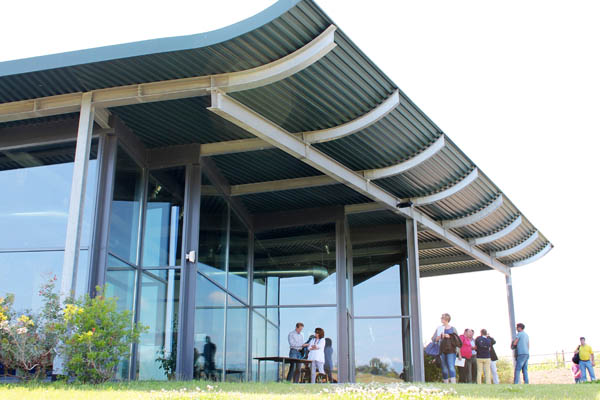
At the estate they also have a restaurant, Ila Locanda del Glicine (glicine is wisteria in English). The restaurant is also open for those who just wish to come and eat a light meal or taste some wine. There is also nearby the Villa della Pieve Vecchia if you want to rent a place for the summer.
Cantina Pieve Vecchia has 50 hectares of land with 30 ha planted with vines. They have not only sangiovese but also grape varieties that you do not usually think of in Tuscany: syrah, alicante and cabernet. For the white wines they use chardonnay, vermentino and fiano.
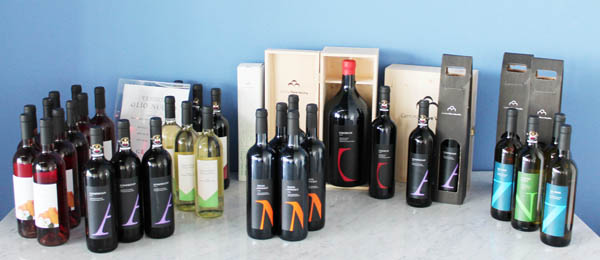
Azienda Agricola Marinelli, a traditional winery on the border to Montalcino
When we arrive at the vineyard Azienda Agricola Marinelli it is striking how close it is to the more famous Montalcino. the winery is made up of a few typical Tuscan stone houses, what is called coloniche. From the winery we can se the silhouette of castello Banfi, the well-known producer of Brunello wines. There, behind the hill, someone points out, is Col d’Orcia, another famous Brunello producer. The two districts are just separated by the Orcia river.
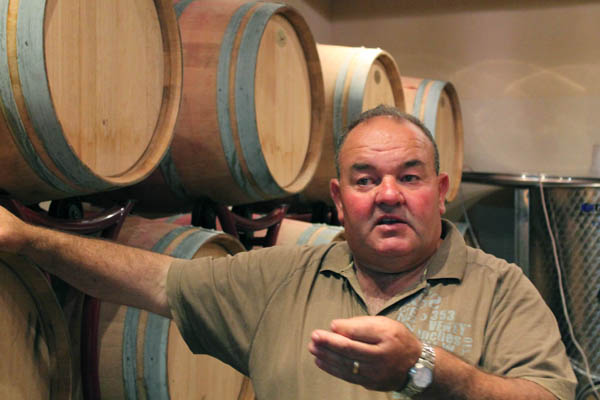
There are many similarities between the northern Montecucco and the southern Montalcino. Both use the same sangiovese clone, sangiovese grosso (which is also used in the rest of Montecucco) and the soil has a higher contents of clay compared to the more southern parts of Montecucco where they have more stony soil. The soil is also rich in minerals due to the proximity of the Monte Amiata volcano. When y get close to Monte Amiata you get up on higher altitudes, 350 meters above sea level and more. This gives wines with more elegance since the polyphenols have more time to develop thanks to the bigger differences between day-time and night-time temperatures. A good thing in the steadily warmer Tuscany.
Azienda Agricola Marinelli has only 7 ha of vineyards. It is a family run winery where most of the work is done by hand. They started bottling their own wine only in 2006. We taste the wines in the rustic wine cellar on a table with an oilcloth with a flower pattern. It does make quite a contrast to the luxurious and impressive vineyards we had seen before. The winery only uses copper and sulphur for treatments in the vineyard, just like in organic farming, but they have not yet started the process to become certified.
The wines are rustic and very nice, just like the winery, and they are made from nothing but sangiovese, except a small dose of merlot. They also make a white wine from trebbiano and malvasia ansonica that is very fresh and straight forward.
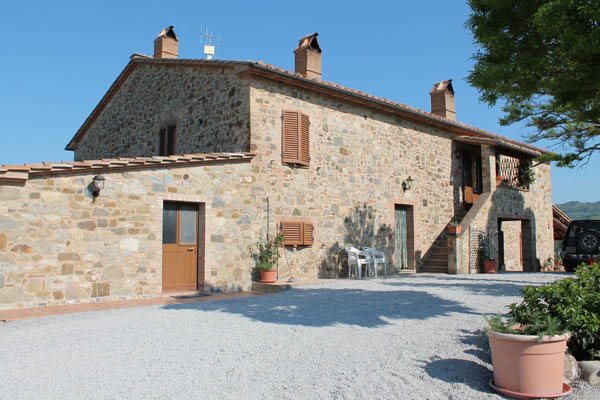
Azienda Agricola Salustri, il signor Sangiovese
Leonardo Salustri has dedicated all his life to the study of the sangiovese grape. His organic vineyard, that he runs together with his wife with the beautiful Etruscan name Nará, is in the family since three generations. What strikes me immediately when we meet is the feeling of simplicity and love for the terra reflected in everything he does.
“When I was young the producers in Montecucco used to want me to come and taste their grapes to help them decide when to harvest. I was known for my sensitive palate”, explains Leonardo Salustri.
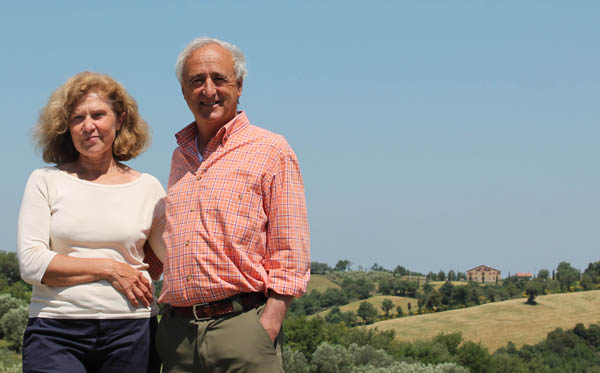
In the vineyard he has almost exclusively sangiovese. There is also a little bit of ciliegiolo and the white grape vermentino. He also has a vineyard with 600 different closes of sangiovese that is a research project in collaboration with the University of Pisa.
“One day I found a vine in the forest and tasted the grapes. I said ‘this is sangiovese’. No one believed by but after having made the tests at the university it turned out that I was right so now that clone is also in the vineyards together with the 599 other clones of sangiovese”, he says with a smile.
For his own production he uses a specific clone that has been named “clone salustri”. It originates from the vineyards that were on the vineyards at the beginning of the 20th century.
The conditions here at the Salustri vineyard are perfect to grow sangiovese. an altitude of between 300 and 400 meters, some wind, and big differences in temperature between day and night, and a stony soil with some sand and rich in minerals. The vines are between fifty and seventy years old. They produce small quantities of grapes so the yield is very low at the Salustri vineyard.
“We only use the indigenous yeast and traditional big wooden vats (botti)”, explains Leonardo Salustri.
The wines that we taste are excellent. They all have a similarity of style: elegant, straight and complex. They will not leave you indifferent. The top wine, Terre Alvieri 2007, comes from a specific plot of 1 ha with vines dating from the 50s and is a very good wine. The price is around 30 euro but it is worth every cent. It takes its name from the previous owner of the plot who promised to sell the vineyards to Leonardo’s son Marco when he retired. And he did.
“I had been eyeing that plot for a long time because I know it was the perfect place for sangiovese”, says Leonardo.
He has also created a wine glass specially suited to sangiovese he claims. Imagine a big and round wine glass for red wines with a small glass marble at the bottom that just surface above the wine in the glass. Like a small island with a sea of red wine around it.
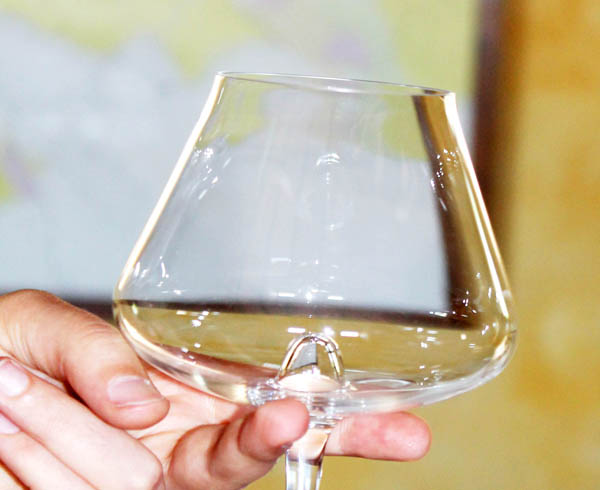
“The small marble makes the wine open up and all the wonderful aromas in the sangiovese come alive”, explains Leonardo Salustri.
The other wines in his range are also very good. The white vermentino (100%), named after his wife Nará, is very elegant and not as rustic as vermentino wines otherwise tend to be in Tuscany. Grotte Rosse 2008 Montecucco DOC (not yet DOCG at that time) and also the Santa Marta Montecucco DOC are both made from 100% sangiovese and are very clean and excellent in their pure sangiovese simplicity. Just like signor Salustri.
Read the first part of Asa’s articles on Montecucco here: Montecucco, newcomer with style with two heavy-weight neighbours
[box type=”info”]Tuscany has a wealth to offer: beautiful landscape, good food and excellent wines. If you want to discover the joys of Tuscany, its wines, food and gastronomy you can come on a wine tour with BKWine.[/box]



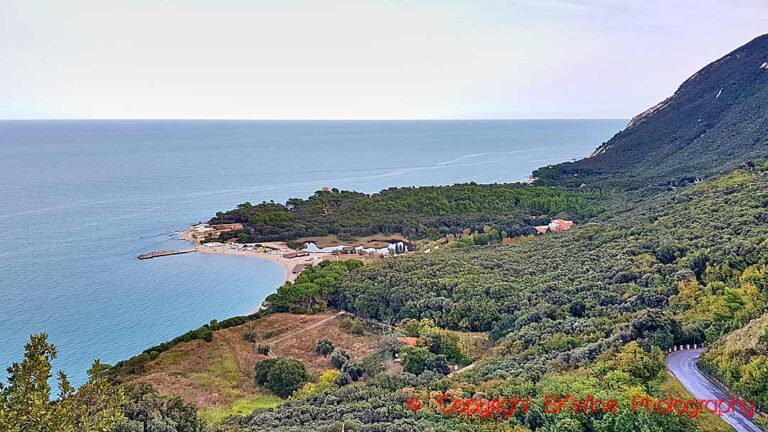
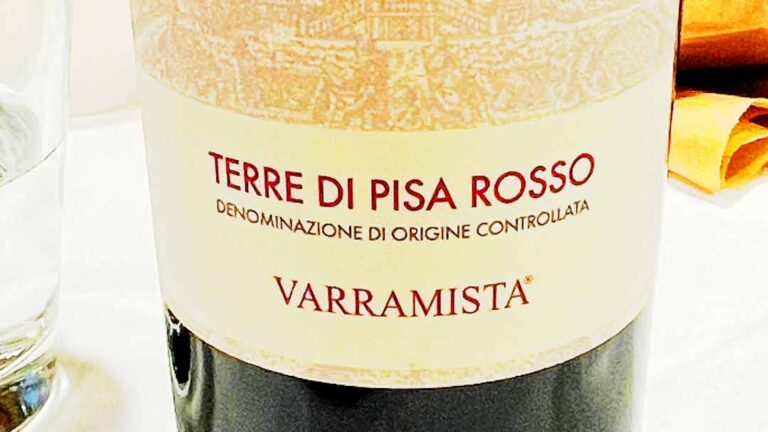
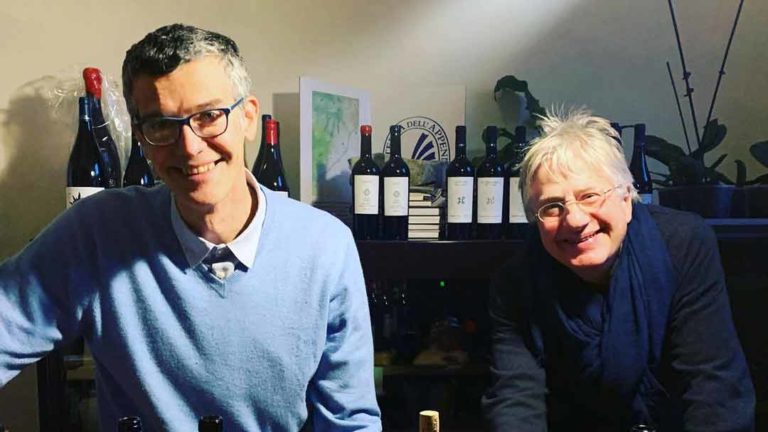





3 Responses
Loved the article, wished you had listed different bottles with prices generally charged.
I wondered if there is a dealer within the State of
Washington for purchases. If so please let me know. Thanks, Rich